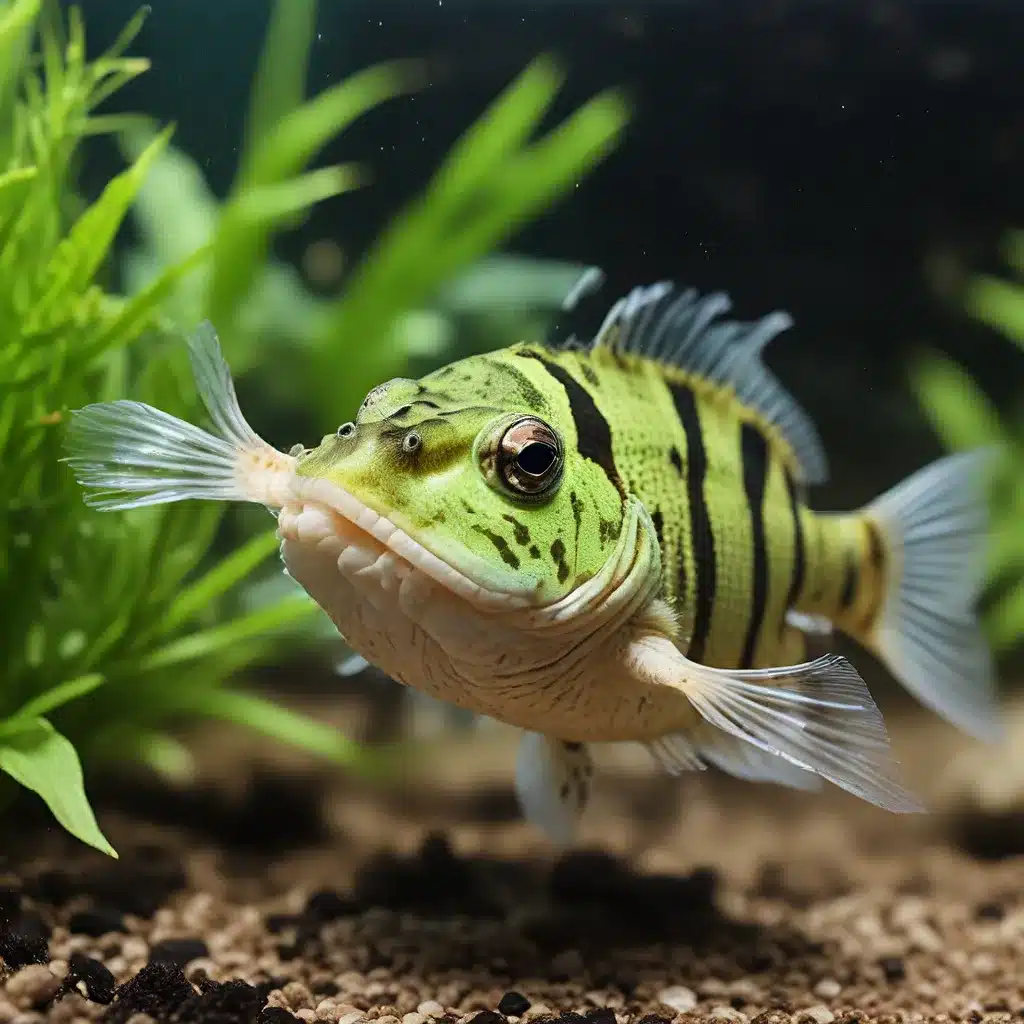
Understanding Common Aquarium Pests
One of the most frustrating challenges faced by aquarium enthusiasts is dealing with unwanted pests and invasive species. From stubborn algae growths to unwelcome crustaceans, these nuisances can wreak havoc on the delicate balance of an aquatic ecosystem. However, with the right knowledge and proactive approach, you can effectively manage and control these issues, preserving the health and beauty of your aquarium.
Let’s dive into the most common aquarium pests and explore practical strategies for eliminating them:
Algae Overgrowth
Excessive algae growth is one of the most widespread problems in aquariums. This unsightly and potentially harmful issue can be caused by a variety of factors, including high nutrient levels, inadequate water circulation, and improper lighting. To combat algae, start by identifying the root cause and addressing it through proper water changes, adjusting lighting schedules, and maintaining a healthy planted aquascape. Aquarium Coop offers a comprehensive guide on identifying and eradicating different types of algae.
Snail and Crustacean Infestations
Unwanted snails and crustaceans, such as planaria and hydra, can quickly overtake an aquarium, competing with your desired fish and plants for resources. These pests can reproduce rapidly and disrupt the natural balance of your ecosystem. To address this issue, consider introducing predatory fish or invertebrates, such as loaches or assassin snails, that will help keep the population in check. You can also manually remove these pests or use targeted chemical treatments, but exercise caution and research the appropriate methods to avoid harming your aquarium inhabitants.
Parasitic Infections
Fish parasites, such as ich, flukes, and anchor worms, can cause significant stress and even mortality in your aquarium inhabitants. These microscopic organisms can enter your tank through new additions, contaminated equipment, or poor water quality. Implementing a comprehensive quarantine protocol for new fish, regular water testing, and effective medication can help mitigate the risk of parasitic outbreaks. The Spruce Pets provides valuable information on recognizing and treating common fish diseases.
Invasive Plant Species
Aquarium hobbyists must also be vigilant about the introduction of unwanted plant species, which can quickly overtake and outcompete the desired vegetation in your aquascape. Invasive plants, such as duckweed or hornwort, can spread rapidly and deplete essential nutrients, leading to a decline in the health and appearance of your aquarium. To prevent this, thoroughly inspect any new plant additions and quarantine them before introducing them to your main tank. Additionally, regularly trim and remove any fast-growing or aggressive plant species to maintain the balance of your aquatic ecosystem.
Implementing Effective Pest Control Strategies
Adopting a proactive and comprehensive approach is key to effectively managing aquarium pests. By understanding the root causes, monitoring your tank closely, and utilizing a combination of preventive and reactive measures, you can keep your aquarium thriving and pest-free.
Maintain Optimal Water Quality
Ensuring optimal water quality is the foundation for a healthy, pest-free aquarium. Regularly test your water parameters, such as pH, temperature, and nutrient levels, and make the necessary adjustments to create a stable and balanced environment. Consistent and timely water changes, along with the use of effective filtration systems, can go a long way in preventing the proliferation of unwanted algae, snails, and other pests.
Quarantine New Additions
Whenever you introduce new fish, plants, or other aquarium inhabitants, it’s crucial to quarantine them before adding them to your main tank. This helps prevent the inadvertent introduction of parasites, diseases, or invasive species that could disrupt the established ecosystem. Use a dedicated quarantine tank or container and observe the new additions for several weeks, treating any issues that may arise before integrating them into your main aquarium.
Utilize Biological Controls
Harnessing the power of natural predators and competitors can be an effective way to control aquarium pests. For example, introducing species like Siamese algae eaters, Otocinclus catfish, or nerite snails can help manage algae growth. Predatory fish, such as loaches or dwarf puffers, can help keep populations of unwanted snails and crustaceans in check. Be mindful when introducing any new species, as they may have their own care requirements and potential impact on your existing aquarium inhabitants.
Employ Targeted Treatments
In some cases, the use of targeted chemical treatments may be necessary to eliminate persistent pest problems. However, exercise caution when using medications or algicides, as they can potentially harm your desired fish and plants if not used correctly. Always research the specific product, follow the instructions closely, and perform partial water changes to dilute any residual chemicals after the treatment period. Seek guidance from experienced aquarists or consult reliable online resources to ensure the safe and effective use of these products.
Maintain a Balanced Aquascape
A well-designed and properly maintained aquascape can be a powerful tool in the fight against aquarium pests. Incorporate a diverse range of plants, both in terms of species and growth habits, to create a thriving ecosystem that supports the natural balance of your aquarium. Avoid overcrowding, as this can lead to nutrient imbalances and provide ideal conditions for pests to thrive. Regularly prune and trim your plants to remove any dead or dying material, which can harbor algae and other undesirable organisms.
Embracing a Proactive Approach
Effective aquarium pest control requires a proactive and multifaceted approach. By understanding the underlying causes, implementing preventive measures, and utilizing a combination of biological and targeted treatments, you can maintain a healthy, vibrant, and pest-free aquarium environment. Remember, staying vigilant, monitoring your tank closely, and addressing issues promptly are key to ensuring the long-term success and enjoyment of your aquatic hobby.
For more information and guidance on aquarium care, be sure to explore the comprehensive resources available on King Aquarium. Their team of experts offers valuable insights and practical solutions to help you master the art of aquarium maintenance and create a thriving underwater oasis in your own home.

